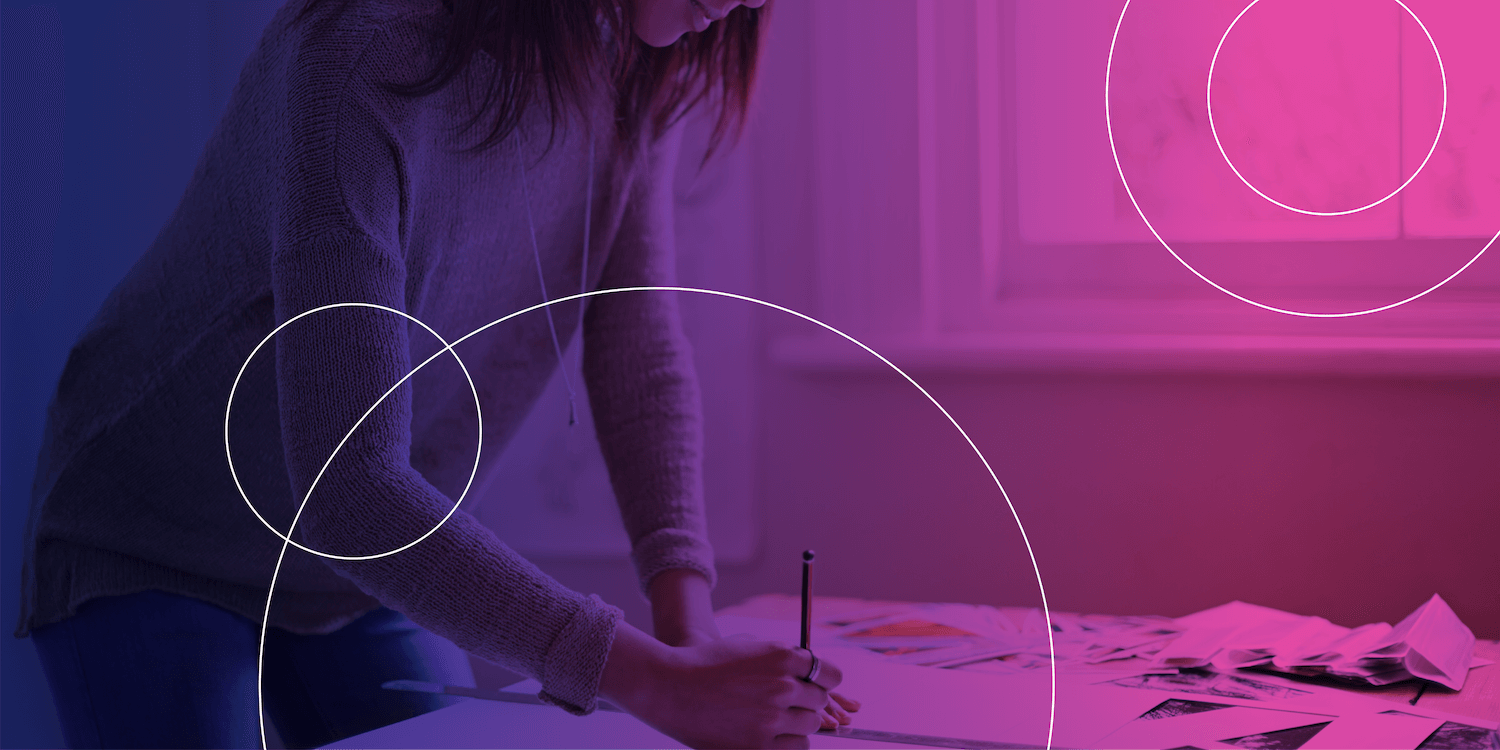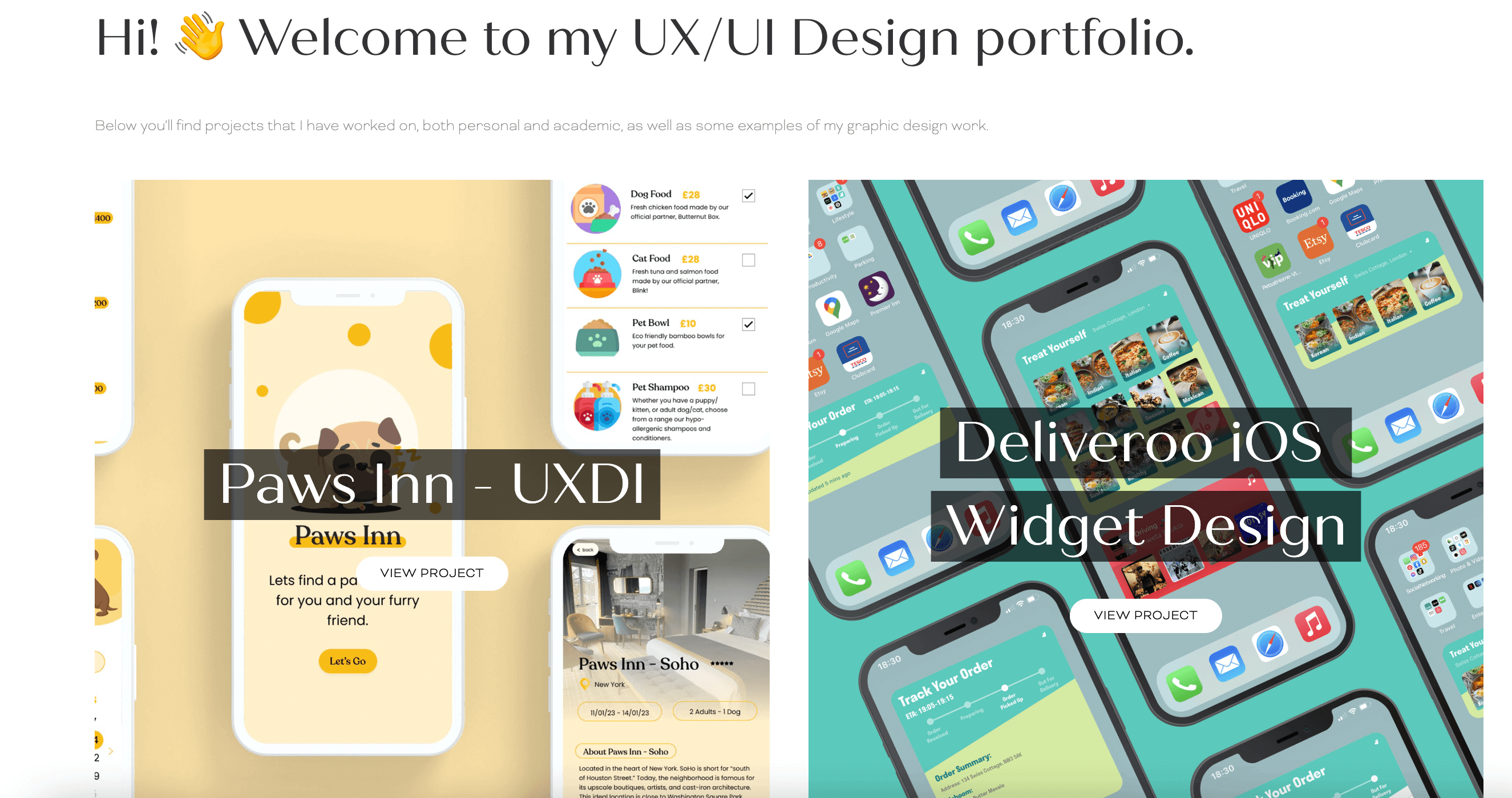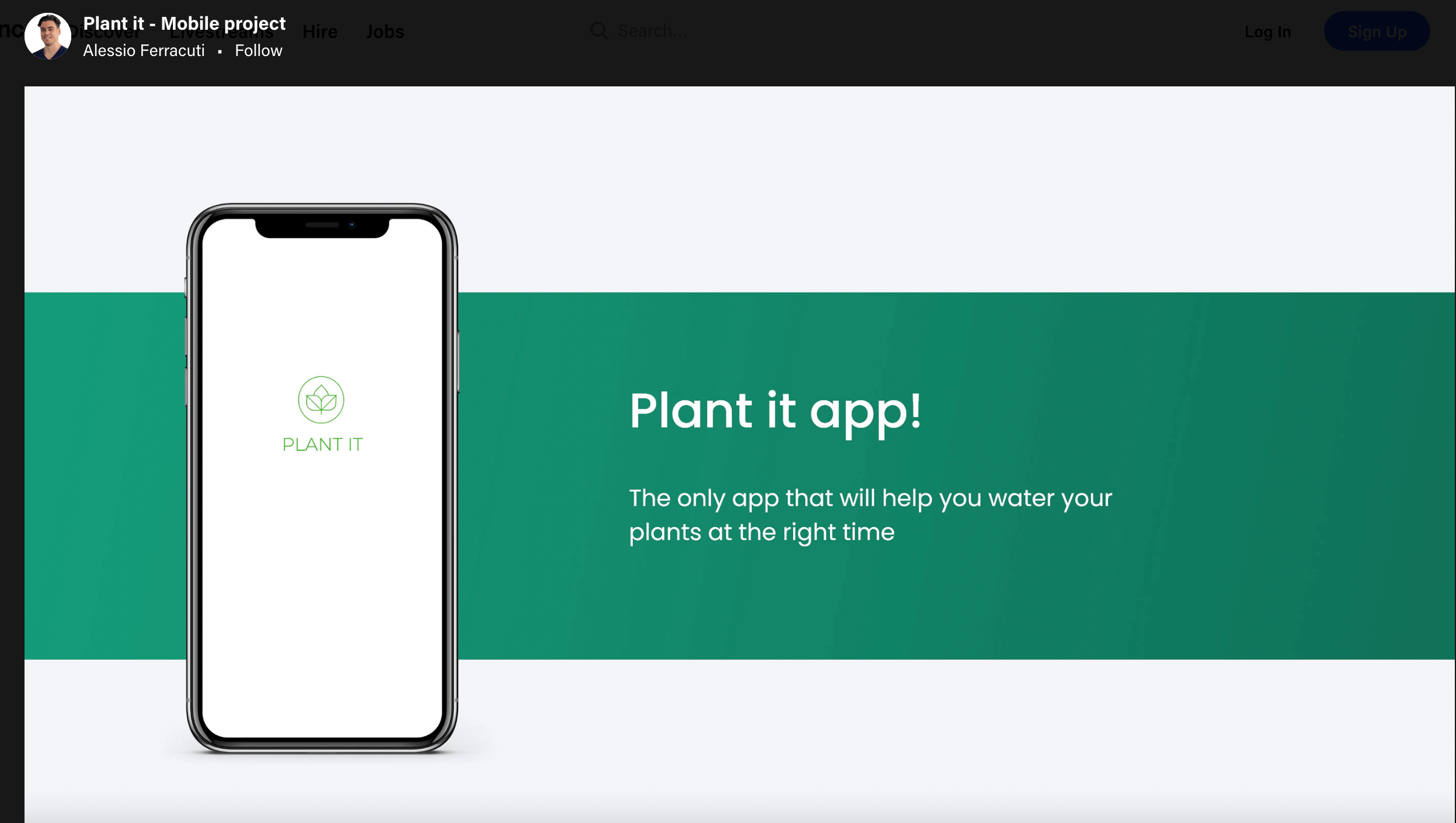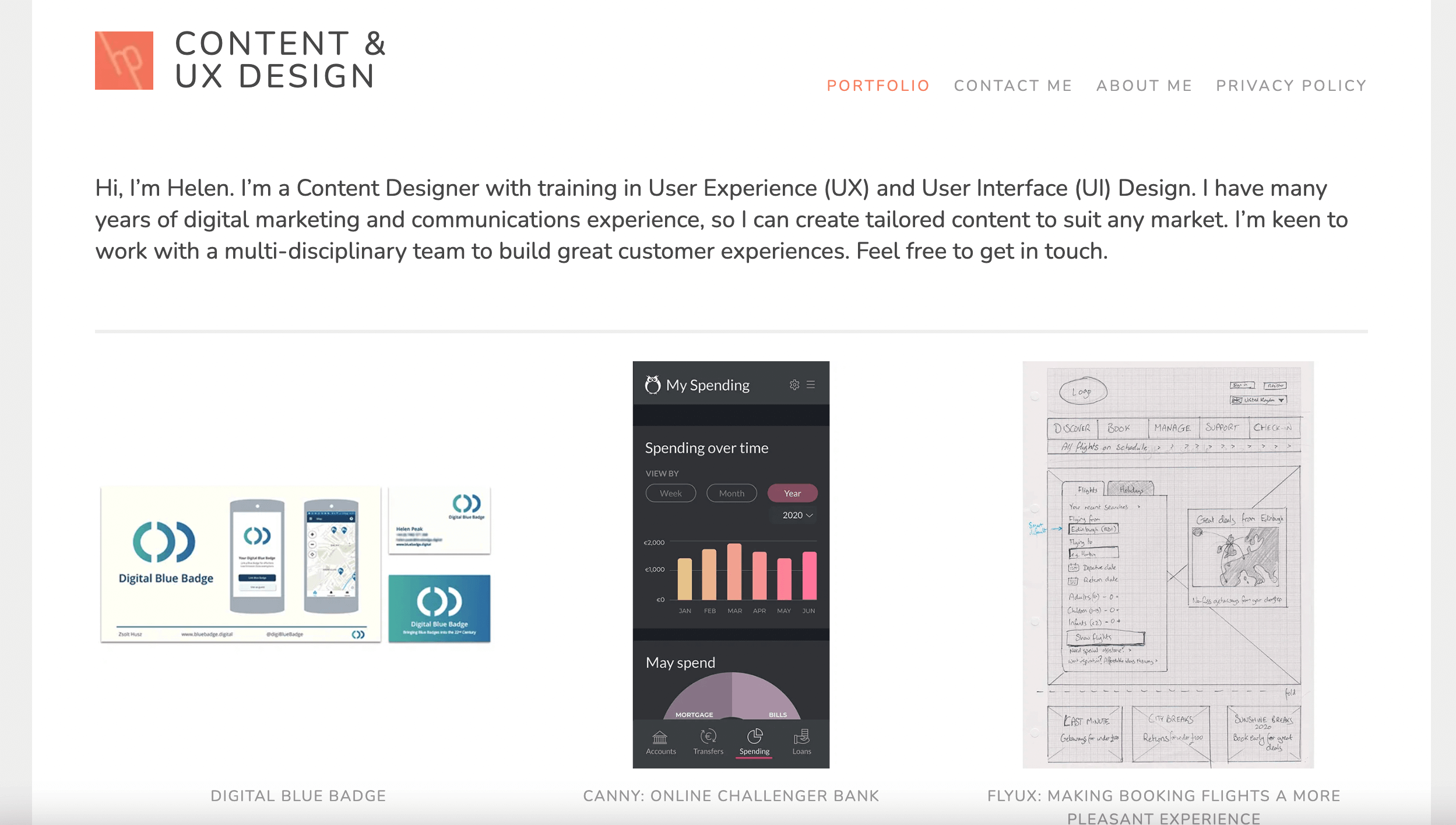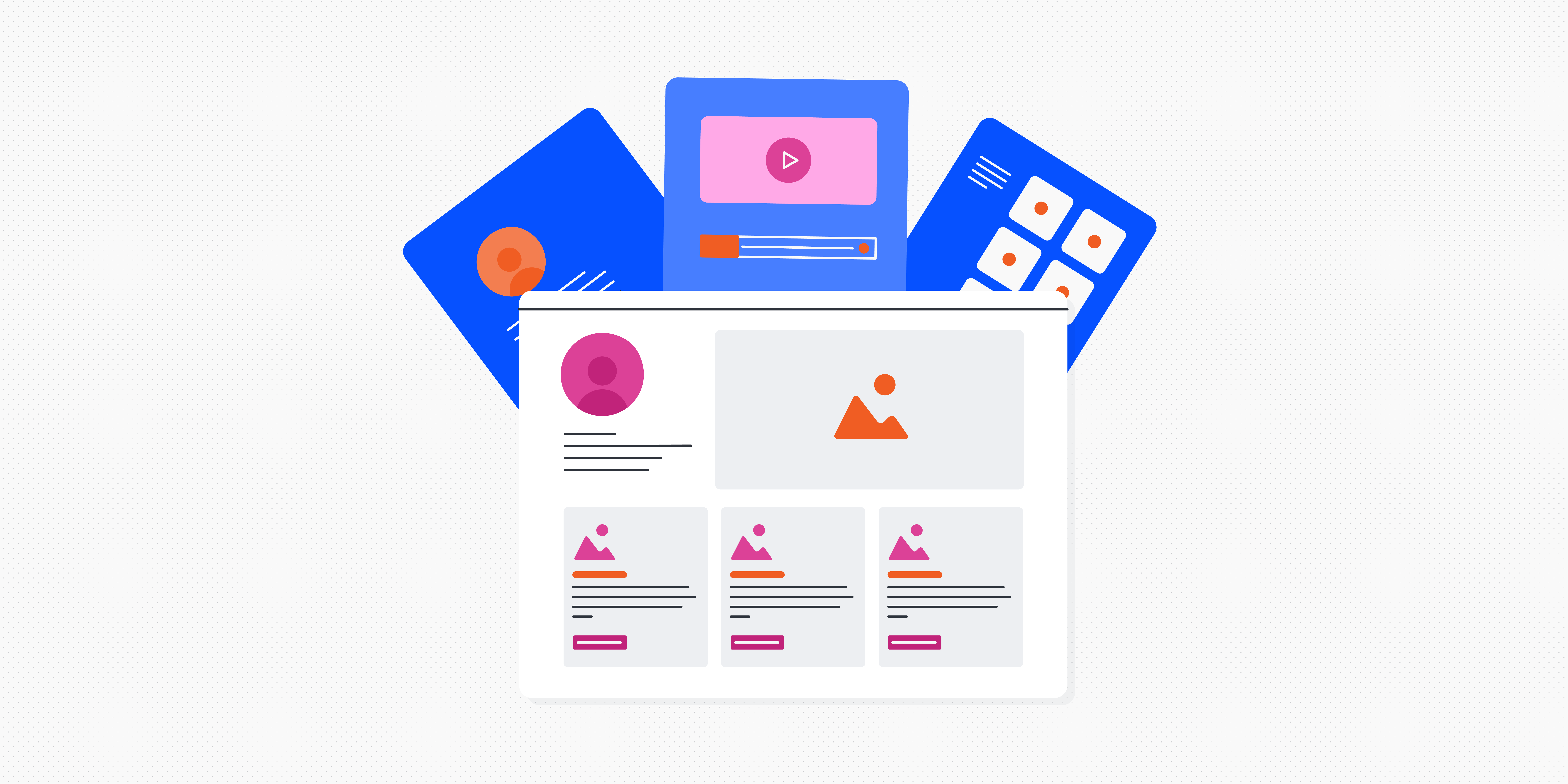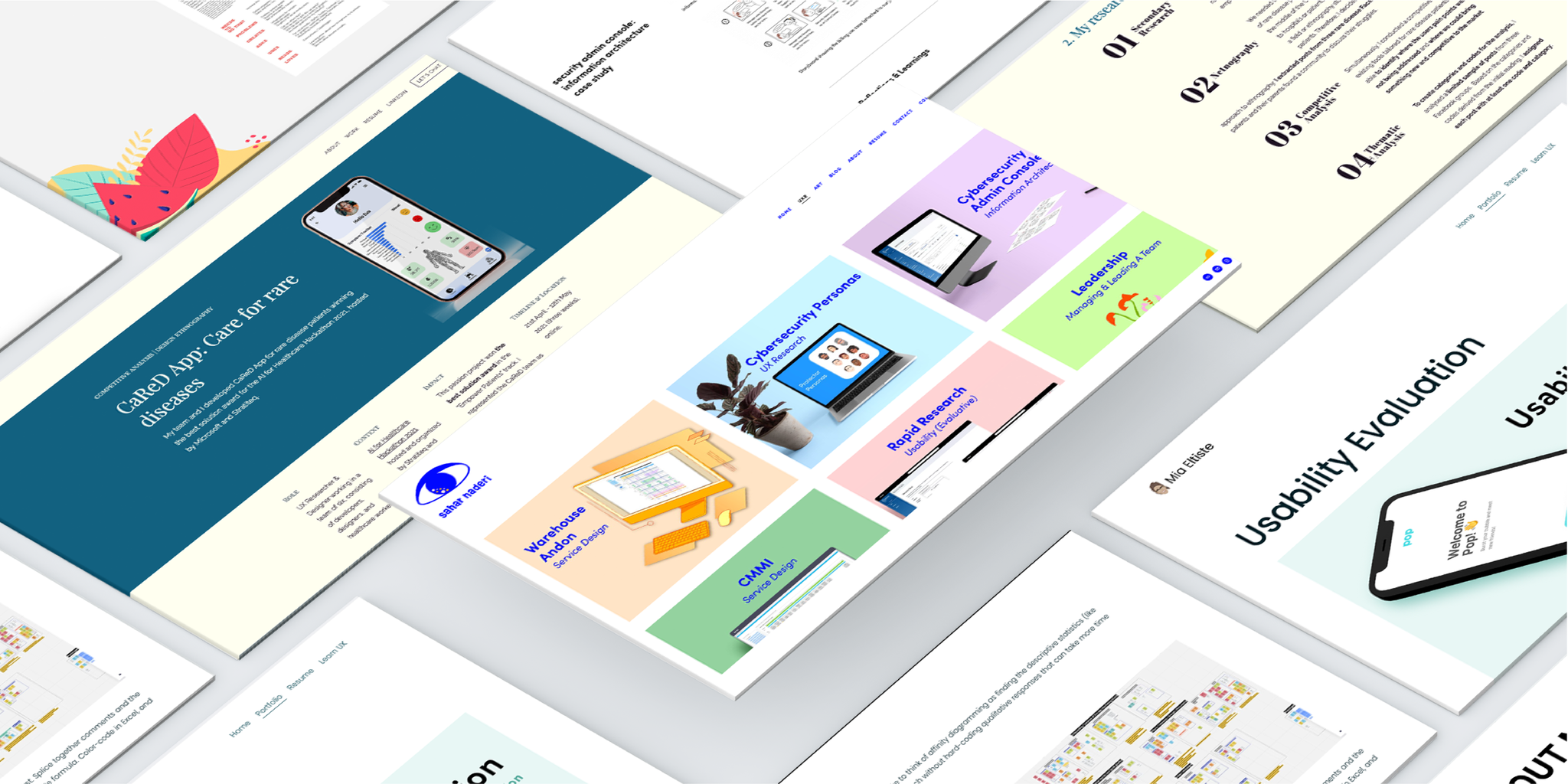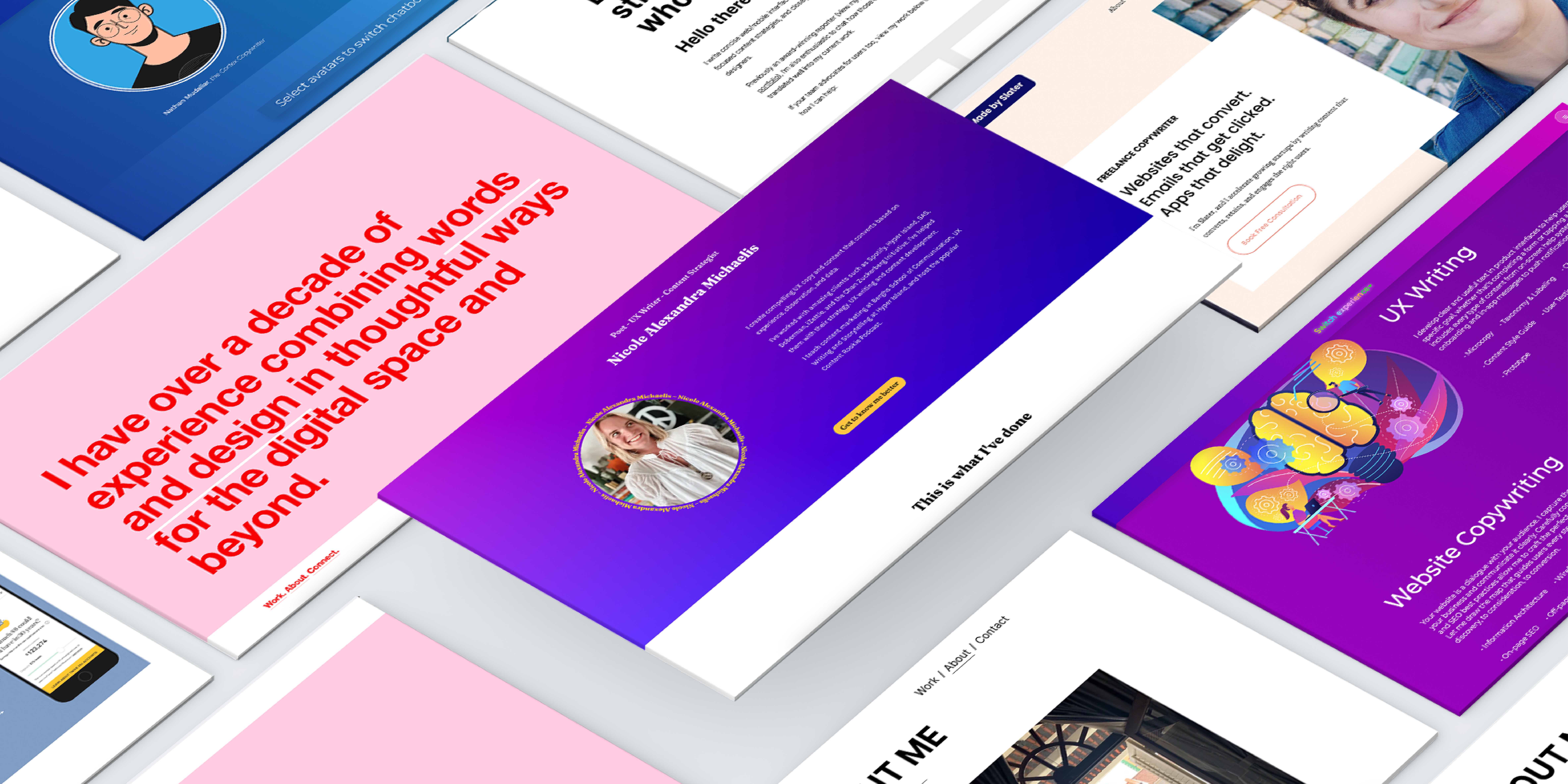The short answer is yes. But we’re not going to leave you hanging like that. You must want to know how to get a UX design job with just one portfolio project. We would know – our students have done it time and again.
Maybe you’re a new UX designer looking for your first gig or maybe you’re still learning and thinking about the job search already. Either way, you’re want to get your portfolio in order and you don’t need a dozen projects to showcase your skills.
In this article, we’ll walk you through how to make an impressive one-project portfolio, what hiring managers are looking for in a portfolio and stories from students who landed their first UX job with just one portfolio project.
Let’s start with the basics.
What is a UX design portfolio and why do you need one?
A UX portfolio is an online place where you display your best work for hiring managers. Your portfolio is a way to show how you work. Usually, UX design portfolios are formatted as case studies and they walk hiring managers through your project from start to finish.
You need an impressive portfolio to land a job but that doesn’t mean you need a lot of projects. In fact, you can just include one project to start your job search. But you do need to have the basics beautifully and effectively so that your project stands out.
What should a UX design portfolio include?
Your UX design portfolio should, first and foremost, include your best complete project. But along with that, your portfolio needs to demonstrate who you are, your personality and your skills.
Make sure your portfolio includes:
- A noteworthy introduction
- Only high-quality UX case studies
- Evidence of your ability to reflect and learn
- A user-friendly format
- Accessible elements of UI design
Your portfolio should demonstrate that you know what a polished finished product looks like. It should demonstrate your process, show deliverables and measurable results. If possible, you can also include a testimonial or two to push it over the top.
5 tips for building a portfolio with one project
Your portfolio is the best evidence that you have the knowledge and skills to do the job. It’s the only way to show that you can take those skills beyond the theories you’ve learned. It also proves that you can apply them to real-world situations with real stakeholders, deadlines and requirements. Here are five ways to make these objectives clear in your one-project portfolio.
1. Make it an in-depth case study
Whatever work you do, explain it. As you’re working through a project, document everything you do. Never delete anything! Even if you think you made a mistake. Go back and make sense of every aspect of your project and show why you did what you did in chronological order. This will make your project extensive yet meaningful.
2. Keep improving
While you’re applying for jobs, take the time to update and improve your portfolio project regularly. If you get feedback on your portfolio during an interview, use it to improve your project. If you can, start creating a second portfolio project while you search.
3. Quality over quantity
Your portfolio should be polished. Include work that you’re actually proud of. Your portfolio isn’t for incomplete projects, partial drafts or work that you’d describe as “meh”. Sure, you can update the projects in your portfolio to ensure they’re the best they can be. But don’t put work in progress in your portfolio. One well-executed project is better than six poorly-executed projects.
4. Use the 50/50 rule
The 50/50 rule: include 50% images 50% text. Wherever possible, show what you’ve done through screenshots, wireframes and other project images. Hiring managers want to grasp the look and feel of your project, your process and how you approach design. Plus, they’re usually crunched for time. The 50/50 rule will allow them to breeze through your portfolio while still gleaning everything you want to express.
5. Make problem-solving the focus
Hiring managers want to see how you solve problems. Just like math class in your early years, it’s not going to be enough only to show the final product. As you craft your case studies, try leading with the problem immediately. Then, follow a logical structure to show your process. Even beyond the final step of your solution, reflect on your work. How did it make a difference?
Can you get a UX design job with one portfolio project? Yes.
Now that you know what to do to make a stand-out one-project portfolio. We’ve rounded up a few stellar portfolio examples and experiences from students who landed their job with only one portfolio project.
Shweta Shukla
Shweta landed her first UX job with an excellent one-project portfolio. She said, “I had only one real project on my portfolio. I wanted to make sure it was as detailed as possible to showcase what I had learnt in this course”.
You can view Shweta’s portfolio here. She’s added a few projects since she got her first job but her now 3-project portfolio is a great example.
Alessio Ferracuti
Alessio attributes landing his first job in UX design to his one-project portfolio. He told us, “My course portfolio is how I got my job, it showed that I have the knowledge”. Alessio is obsessed with user experience design. He now hosts a podcast and mentorship program for new UX designers. You can check out Alessio’s one-project portfolio here.
Helen Peak
Helen’s one-project portfolio got her noticed! “I actually gave a presentation about the Professional Diploma at a UX design networking event,” she remembers. “My current boss was there. He looked up my portfolio online and reached out to me to say he was looking for someone like me.” Her portfolio landed her a job at Delbur, which is on the Scottish Government’s CivTech accelerator scheme. You can see Helen’s portfolio here. She’s added a couple of projects since then.
Jonny Fraser
Jonny made his portfolio shine with his personality and found that’s what attracted employers to him. He said, “Employers knew I had limited UX experience, but they liked the fact that I was passionate about learning. I love what I do now, and I wouldn’t be where I am without the UX Design Institute.” View Jonny’s portfolio here.
One last piece of advice
We checked in with Ronan McConville for one last piece of advice for aspiring UX designers:
I would say, in the boldest terms, if I get an application for a UX role I will spend seconds looking at the CV and far, far longer at the portfolio. That’s where the quality is. A portfolio can make or break if a hiring manager will take a chance on you. Ultimately, they want to hire the best candidate to solve their problems.
The portfolio is your time to shine. One fantastic portfolio project is far better than three mediocre projects. Your portfolio should make hiring managers and recruiters confident in your UX skills.
Finding a course where practical work is a big part of the curriculum will be a bonus for your portfolio. You’ll have multiple projects you can choose from to customise even further for your final portfolio.
In the UX Design Institute’s Professional Diploma in UX Design, every student will have a project to contribute to their portfolio through the practical assessments they complete. They will also have feedback from the Student Support Team and Career Advisors to make sure that their portfolio projects prove how job ready they are.
To learn more about portfolios, take some case study inspiration from Miro’s Srecko Dimitrijevic. Or try creating a UX portfolio without any on-the-job experience and building it with one of these ten tried-and-tested portfolio builders.

